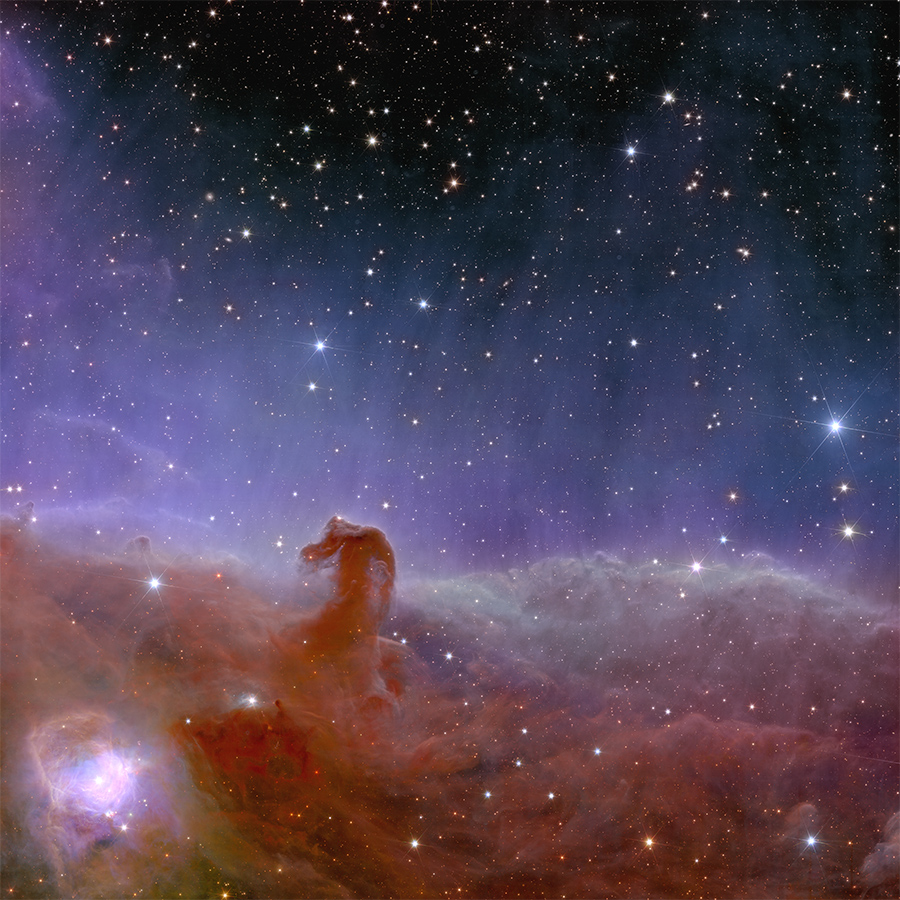
ESA / Euclid / Euclid Consortium / NASA, image processing by J.-C. Cuillandre (CEA Paris-Saclay), G. Anselmi; CC BY-SA 3.0 IGO
Eat your heart out, JWST. The European Space Agency (ESA) has published the first color images obtained by the Euclid space telescope, and they’re gorgeous.
With its 1.2-meter primary mirror, Euclid is less powerful than the James Webb Space Telescope, but its field of view is about 200 times as large. As a result, each Euclid image covers an area twice the size of the full Moon, while the angular resolution is about 0.2 arcseconds.
“The images are thrilling and are a testament to the hard work by the Euclid team over the past many years,” comments Julie McEnery (NASA Goddard), the project scientist for NASA’s future Roman Space Telescope, to be launched in 2027. “Congratulations!”
Like an astronomical Sherlock Holmes, Euclid will try to solve (or at least shed more light on) the two biggest conundrums in cosmology: dark matter – the mysterious stuff that keeps galaxies from flying apart – and dark energy, the puzzling force behind the accelerating expansion of the universe.
Launched on July 1st, Euclid will now map the 3D distribution of 1.5 billion galaxies out to distances of 10 billion light-years. This map will reveal the evolution of the large-scale structure of the universe, which is governed by both dark matter and dark energy.
Meanwhile, precision measurements of the shapes of galaxies will yield information on the distribution of dark matter. These shapes are affected by gravitational microlensing – small distortions caused by the gravity of intervening matter, both luminous and dark.
“The quality of these first images is really great,” says cosmologist Henk Hoekstra (Leiden Observatory, The Netherlands), a member of the Euclid Science Coordination Group. “Everything suggests that Euclid will perform even better than expected, and that the mission will reach its scientific goals.”
What the First Images Hold

ESA / Euclid / Euclid Consortium / NASA, image processing by J.-C. Cuillandre (CEA Paris-Saclay), G. Anselmi; CC BY-SA 3.0 IGO

ESA / Euclid / Euclid Consortium / NASA, image processing by J.-C. Cuillandre (CEA Paris-Saclay), G. Anselmi; CC BY-SA 3.0 IGO
Euclid has targeted the famous Horsehead Nebula in Orion; a nearby globular cluster (NGC 6397); two galaxies (NGC 6822 and IC 342); and the Perseus galaxy cluster. This last image not only shows some 1,000 cluster members, but also a whopping 100,000 remote background galaxies.

Many of these faint galaxies were previously unseen. Some of them are so distant that their light has taken 10 billion years to reach us. By mapping the distribution and shapes of these galaxies, cosmologists will be able to find out more about how dark matter shaped the universe that we see today.
ESA / Euclid / Euclid Consortium / NASA, image processing by J.-C. Cuillandre (CEA Paris-Saclay), G. Anselmi; CC BY-SA 3.0 IGO

ESA / Euclid / Euclid Consortium / NASA, image processing by J.-C. Cuillandre (CEA Paris-Saclay), G. Anselmi; CC BY-SA 3.0 IGO
According to Hoekstra, images like these enable much more science than just cosmology. “For instance, because of Euclid’s large field of view, we may easily discover rare objects, like young solitary brown dwarfs in star-forming regions,” he says. “You can never find those with JWST.”
Euclid’s project scientist René Laureijs (ESTEC, The Netherlands) is particularly happy with the very dark background in the images. Shortly after launch, it turned out that Euclid suffered from stray light entering the telescope, but this problem has been successfully remedied by avoiding certain orientations with respect to the Sun. “Apparently, we’ve done a good job,” says Laureijs.
What’s Coming
Euclid’s nominal six-year survey, which will cover about one-third of the full sky, will start in late January or early February next year, says Laureijs. The first science data probably won’t be released before 2026, “but every now and then, we will publish the most beautiful images from the survey.”
In a complementary mission, NASA’s Roman Space Telescope will also make 3D maps of the distant universe and study gravitational microlensing, but with a telescope 2.4 meters in diameter. “Roman will have greater sensitivity but will survey a much smaller region of sky,” says the mission’s project scientist McEnery.
Moreover, she says, “in regions where our surveys overlap, Roman will be able to search for objects that have evolved since the time of the Euclid observations. The superb angular resolution of Euclid and Roman coupled with their wide-angle vision will give us an unprecedented view of the dynamic universe.”
As for cosmology, adds Roman’s deputy project scientist Jeffrey Kruk (NASA Goddard), “Euclid’s wider area survey will excel at lower redshifts [corresponding to closer distances], while the greater depth of the Roman survey will probe to higher redshifts [farther distances]. The combination of the two datasets will be more powerful than either on its own.”
